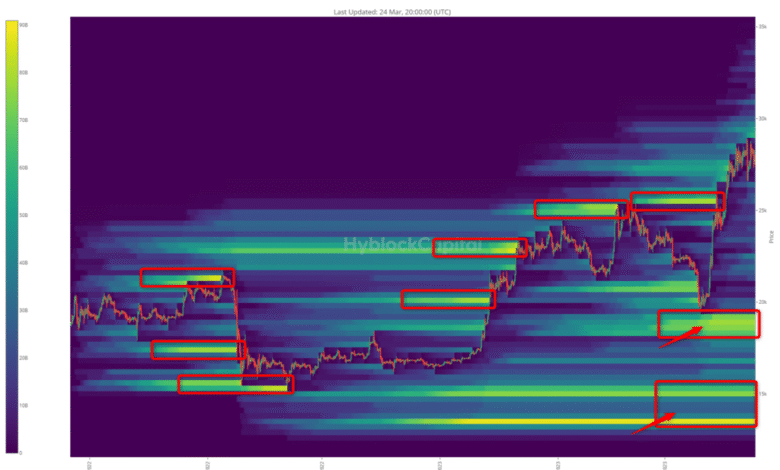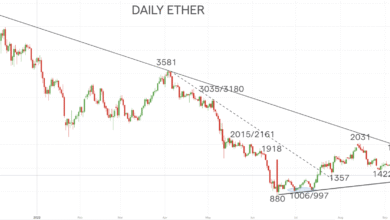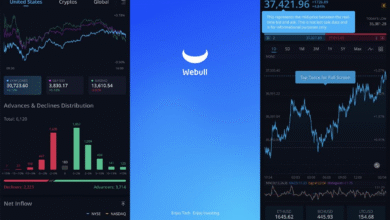Bitcoin Liquidations: $334M Wiped out as BTC Surges

Bitcoin liquidations are currently at the forefront of the cryptocurrency conversation, especially following a dramatic $334 million wipeout of short positions on July 14. As BTC price surged past $120,000, traders like the high-risk participant known as Falllling faced devastating losses in an environment characterized by intense volatility. The rapid liquidation of substantial short bets underlines the high stakes associated with crypto trading, particularly during a bull market where bullish sentiment can shift rapidly. As traders attempt to navigate this treacherous landscape, the interplay between high-risk trading and the potential for massive liquidations becomes increasingly relevant. With over 124,000 traders swept away in just 24 hours, understanding the dynamics of bitcoin liquidations is essential for anyone involved in the crypto market.
In the realm of digital currencies, the term “crypto liquidations” refers to the process where positions, particularly those betting against rising prices, are forcibly closed due to margin calls and negative price movements. Recent events underscore the precarious nature of these trading strategies, especially when considering the substantial losses linked to short positions during sharp BTC price increases. The volatility inherent in these markets can quickly lead to cascading liquidations, particularly in a burgeoning bull market where many traders grasp for gains through high-leverage tactics. The narrative of traders facing liquidation highlights the risks involved in this fast-paced ecosystem, drawing attention to the fine line between strategic trading and reckless speculation. As the cryptocurrency landscape evolves, understanding these terminologies and their implications becomes crucial for anyone looking to engage successfully.
Impact of Bitcoin Liquidations on Market Dynamics
The recent wave of Bitcoin liquidations has significantly shaped the overall cryptocurrency market dynamics. As BTC exceeded the psychological threshold of $120,000, short positions faced severe repercussions, resulting in a staggering $334 million worth of liquidations within hours. This sharp decline in short positions interrupts the betting against the market, realigning the balance towards bullish momentum in the crypto landscape. Such large-scale liquidations not only affect individual traders but also initiate a ripple effect across the market, leading to increased volatility and unpredictability regarding future price movements.
These recent Bitcoin liquidations underscore the inherent risks associated with higher-leverage trading strategies. Traders like Falllling, who engage in shorting during a bull market, often risk significant capital due to abrupt market shifts. The consequences can be severe when bullish sentiment prevails, leading to mass liquidations and devastating losses for high-risk traders. Understanding these dynamics highlights the essential nature of risk management strategies within the crypto trading arena, ensuring that traders can navigate price surges without facing exorbitant losses.
BTC Price Surge: A New Era for Cryptocurrency
The recent surge in BTC price signals a potential new era for the cryptocurrency market. Achieving an all-time high of $122,604 reflects not only a reiteration of Bitcoin’s dominance but also the resilience of its bullish trend despite past volatility. Within this short period, the market saw a 10% increase, which coincided with a broader narrative of recovery and expansion in digital assets. Many analysts view this rally as a confirmation of Bitcoin’s bullish run, energizing traders and investors alike to reconsider their strategies in light of these promising trends.
Moreover, the BTC price surge indicates strengthening market confidence that could attract a new wave of investment. The shift from previous consolidation phases suggests that the bullish sentiment is likely to gain momentum, potentially inviting more participants into high-stakes trading. As more investors align their strategies with these market dynamics, the potential for further increases in Bitcoin’s price could stimulate not only higher trade volumes but also more pronounced price projections in the near future.
The Role of High-Risk Trading in Crypto Markets
High-risk trading has become a notable aspect of the cryptocurrency market, with traders seeking substantial returns often employing extreme strategies. The case of the trader Falllling, who suffered significant losses after betting against Bitcoin during a bullish phase, exemplifies the dangers inherent in high-leverage trading. Utilization of significant leverage can amplify gains, but it can conversely lead to catastrophic losses, as seen with Falllling’s $334 million liquidation. Thus, while high-risk trading strategies can be appealing for their potential profitability, the volatility of the cryptocurrency market presents unique challenges that demand robust risk assessment and management.
Further complicating the landscape of high-risk trading is the emotional aspect that often influences traders’ decisions. Many are drawn to the thrill of rapid trading but can overlook analysis in pursuit of quick profits. This psychological drive may result in traders mimicking strategies from high-profile traders, potentially leading to collective behavior that amplifies market movements. Ultimately, the compelling narrative surrounding high-risk trading serves as a reminder of how discipline and informed decision making can differentiate successful traders from those subjected to market volatility.
Navigating Short Positions During a Bull Market
In a bull market, navigating short positions can pose significant risks for traders. Many experienced market participants recognize the dangers of betting against a rising asset like Bitcoin, which has historically shown resilience and an upward trajectory during bullish trends. Falllling’s liquidation serves as a cautionary tale for those contemplating similar strategies, highlighting the need for comprehensive market research and an astute awareness of prevailing sentiments. Short positions can result in steep losses if not timed correctly, especially in an environment where bullish sentiment prevails and prices surge rapidly.
Moreover, traders should consider the implications of market sentiment, as it can dramatically shift the odds against short positions. For instance, the recent spike in BTC prices indicates robust buying pressure, likely driven by traders experiencing a fear of missing out (FOMO) as the price ascends. Individuals engaging in shorting Bitcoin during such a momentum-driven phase must be prepared to face the repercussions of abrupt market corrections that can lead to mass liquidations. It’s essential for traders to balance their strategies with insights into market conditions and community sentiment to better position themselves against potential losses.
Market Reactions Following Crypto Liquidations
The aftermath of significant crypto liquidations often leads to heightened market volatility, as traders react to drastic changes in their positions. Following the massive $334 million liquidation due to Bitcoin’s surge, sentiments across trading platforms shifted dramatically, sparking conversations about the sustainability of the bullish trend. In the short-term aftermath, many traders rushed to recalibrate their positions, either fleeing the markets altogether or adjusting to exploit newfound opportunities. The rapid fluctuations in Bitcoin’s price often invite new investors into the market while simultaneously scaring others away, underscoring the complex nature of trader psychology in reaction to significant price movements.
Furthermore, the heightened reactions to large-scale liquidations can also create new opportunities for informed traders. Recognizing patterns in market behavior and strategically placing trades during volatile times can yield lucrative results. As demonstrated by the loss of over $590 million in short positions during the recent BTC surge, the market’s response to such events can also set the stage for further price movements and potential recovery phases. Understanding these dynamics provides traders with critical insight that can aid in navigating the turbulent waters of cryptocurrency trading.
The Consolidation Phase Before Major Price Movements
The consolidation phase preceding major price movements represents one of the most intriguing aspects of cryptocurrency trading. During this time, traders often witness indecision within the market, with Bitcoin testing vital support levels, as it did around the $110,000 mark recently. This period of price stabilization provides valuable insight for traders analyzing future breakout potentials. As such, when BTC finally breaks through these critical thresholds, as evidenced by its recent surge past $120,000, the implications are profound, often triggering a cascade of activity among traders who feel compelled to act on new momentum.
Additionally, successful navigation of the consolidation phase requires patience and strategic foresight. Those who can interpret market signals during these stagnant periods gain an advantage over others who may jump precipitously, fearing they might miss out. Traders equipped with insights from technical analysis and market sentiment are positioned to capitalize on the inevitable market shifts that follow consolidations. The understanding of this phase underscores the importance of both market awareness and the ability to execute well-thought-out trading strategies that align with broader price trends.
Psychological Factors Influencing Trading Decisions
Understanding psychological factors that drive trading decisions is essential in the highly volatile world of cryptocurrencies. Emotions such as fear, greed, and excitement can heavily influence traders’ actions, often leading them to make irrational decisions during peak market movements. Following Bitcoin’s action-packed surge, many traders experienced FOMO, driving increased trading activity but potentially undermining their judgment. This emotional roller coaster can precipitate hasty decisions, including shorting during a bull run, as exemplified by Falllling’s sizable liquidation.
Additionally, traders often succumb to herd mentality, where they follow suit based on the actions of others rather than conducting their own analyses. This tendency becomes especially pronounced in markets known for rapid gains and steep losses, like cryptocurrencies. Cultivating a disciplined trading approach that mitigates emotional influence is critical for long-term success in crypto trading. Investors who can maintain composure during market fluctuations, analyze data objectively, and align their strategies with prevailing trends are more likely to succeed in navigating the complexities of the digital asset landscape.
Leveraging Strategies: Proper Use in Cryptocurrency
In the realm of cryptocurrency trading, leveraging strategies can amplify both returns and risks, making their proper usage vital for success. High-stakes traders who utilize extreme leverage, as seen in the case of Falllling, often face significant exposure to market volatility, particularly during abrupt price shifts. While leveraging may appear to present avenues for quick gains, the potential for liquidation looms large, particularly when the market moves against their positions. Properly employing leverage demands a nuanced understanding of market conditions and the development of risk mitigation strategies.
Traders keen on leveraging need to implement safeguards, such as setting stop-loss orders, to limit potential losses. Learning how to balance the advantages of leveraging against the undeniable risks associated with volatility will differentiate successful traders from those who face rapid liquidation scenarios. Thus, leveraging should be approached with caution, thorough analysis, and a commitment to sound risk management practices that protect capital while capitalizing on market opportunities.
Future Projections for the Cryptocurrency Market
As the cryptocurrency market continues to evolve, future projections based on current trends become increasingly critical. The latest BTC price surge, driven by a robust bullish sentiment, suggests a potential escalation in market interest and investment. Analysts are now starting to reassess their predictions, with many pointing towards a sustained upward trajectory that could redefine Bitcoin’s market position. As new records are set, the potential for further price increases invites both new retail and institutional investors keen on capitalizing on perceived bullish momentum.
However, future projections also require a nuanced understanding of the market’s intrinsic volatility. Historical trends reveal that while bullish runs can lead to significant gains, the market can equally experience sharp corrections and liquidations. As Bitcoin closes in on previously unseen price levels, traders must remain vigilant and adaptable, prepared to adjust their strategies according to emerging market data and sentiment. The interplay between bullish sentiment, market dynamics, and trader behavior will ultimately shape the future landscape of cryptocurrency trading.
Frequently Asked Questions
What are Bitcoin liquidations and how do they occur during BTC price surges?
Bitcoin liquidations happen when traders using leverage cannot meet margin requirements, leading to their positions being automatically closed by the exchange. This typically occurs during BTC price surges, as seen on July 14, when $334 million in short positions were liquidated in a matter of hours due to the rapid increase in BTC price.
How do high-risk trading strategies impact Bitcoin liquidations?
High-risk trading strategies, like those employed by traders holding significant short positions, often lead to Bitcoin liquidations during bullish market trends. For example, when BTC surged past $123,000, many traders with short positions faced heavy losses as their bets against the market became unviable, resulting in large-scale liquidations.
What happened to short positions during the recent Bitcoin bull market?
During the recent Bitcoin bull market, particularly on July 14, a substantial amount of short positions were liquidated. Over 124,000 traders experienced losses as BTC skyrocketed, indicating that the bullish momentum in the market overwhelmed short positions, leading to massive liquidations totaling $702.56 million.
Why did traders experience liquidations despite the BTC price surge?
Traders experienced liquidations despite the BTC price surge because many held short positions, betting against the rising market. When BTC broke crucial resistance levels, like $120,000, the rapid price movement triggered automatic liquidations of these short bets, leading to significant financial losses.
What are the risks associated with short positions in Bitcoin trading?
The risks associated with short positions in Bitcoin trading include potential liquidations during price surges, as demonstrated on July 14 when $590.72 million in short bets were lost. Engaging in high-risk trading strategies, such as substantial leverage usage, can expose traders to significant losses if the market rallies.
How do liquidations affect the overall cryptocurrency market?
Liquidations can have a profound impact on the overall cryptocurrency market. A mass liquidation, like the one prompted by the recent BTC surge, can lead to increased volatility and rapid price movements as positions are closed. This can further exacerbate market trends and create a cascading effect among traders.
What lessons can be learned from the $334 million Bitcoin liquidation incident?
The $334 million Bitcoin liquidation incident serves as a stark reminder of the risks of high-leverage trading and the importance of market analysis. Traders should understand market trends and avoid going against bullish movements, as evidenced by the failures of high-risk strategies in recent BTC liquidations.
How can traders protect themselves from Bitcoin liquidations?
Traders can protect themselves from Bitcoin liquidations by implementing risk management strategies such as setting stop-loss orders, using lower leverage, and staying informed about market conditions. Understanding the dynamics of BTC price movements during bull markets can also help traders make more informed decisions.
| Key Point | Details |
|---|---|
| High-Risk Trader Liquidation | A trader named Falllling had $334 million in short positions liquidated within three hours. |
| Assets Liquidated | The liquidation involved 1,743 BTC, 33,743 ETH, and 15 million FARTCOIN. |
| Total Losses | Falllling’s total losses amounted to $25.84 million due to the liquidations. |
| Market Reaction | The occurrence sparked discussions on social media regarding the risks of shorting BTC. |
| BTC Surge | On July 14, BTC surpassed $120,000, leading to massive short liquidations. |
| Number of Traders Affected | Over 124,000 traders had their positions liquidated in a 24-hour period. |
| Total Liquidation Value | Total liquidations reached $702.56 million, mainly from short positions. |
Summary
Bitcoin liquidations reached a staggering height recently, particularly highlighted by the liquidation of a high-risk trader’s $334 million short positions as BTC surged past $123,000. This scenario illustrates the volatility in the crypto market, emphasizing the potential financial pitfalls for traders engaging in high-leverage strategies. The rapid rise of Bitcoin not only led to significant losses for certain traders but also triggered a broader wave of liquidations, showcasing the critical balance between market sentiment and trading strategy.




